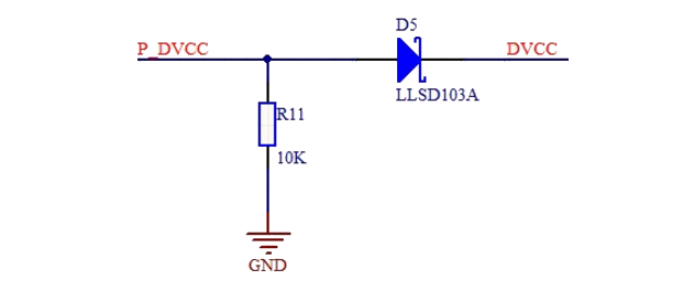
The difference between a Teky diode and a rectifier diode
Source: Network Organization Posted in : 2021-11-08 16:10:23
Rectifier diode
A semiconductor device that converts AC power into DC power. Usually it contains a PN junction with positive and negative terminals. An important characteristic of diodes is unidirectional conductivity. In a circuit, current can only flow in from the positive pole of the diode and out from the negative pole.
The rectifier diode uses the unidirectional conduction characteristics of the PN junction to convert alternating current into pulsating direct current. The leakage current of the rectifier diode is large, and most of the diodes are packaged with surface contact materials. The shape of the rectifier diode is shown in Figure 1. In addition, the parameters of the rectifier diode, in addition to the ones introduced above, also include the rectifier current, which refers to the current value that the rectifier diode allows for long-term operation. It is the main parameter of the rectifier diode and the main basis for the optional rectifier diode.
Schottky Diodes
Schottky diode is named after its inventor, Dr. Schottky, SBD is the abbreviation of Schottky Barrier Diode (Schottky Barrier Diode, abbreviated as SBD). SBD is not made by the principle of forming a PN junction by contacting a P-type semiconductor with an N-type semiconductor, but by using the principle of a metal-semiconductor junction formed by the contact between a metal and a semiconductor. Therefore, SBD is also called metal-semiconductor (contact) diode or surface barrier diode, which is a type of hot carrier diode.
Schottky diode is a metal made of noble metal (gold, silver, aluminum, platinum, etc.) A as the positive electrode and N-type semiconductor B as the negative electrode, using the potential barrier formed on the contact surface of the two to have rectification characteristics. -Semiconductor device. Because there are a large number of electrons in N-type semiconductors and only a very small amount of free electrons in noble metals, electrons diffuse from B with high concentration to A with low concentration. Obviously, there are no holes in metal A, so there is no diffusion movement of holes from A to B. With the continuous diffusion of electrons from B to A, the electron concentration on the surface of B gradually decreases, and the surface electroneutrality is destroyed, so a potential barrier is formed, and the electric field direction is B→A. However, under the action of the electric field, the electrons in A also generate drift motion from A→B, thus weakening the electric field formed by the diffusion motion. When a space charge region with a certain width is established, the electron drift motion caused by the electric field and the electron diffusion motion caused by different concentrations reach a relative balance, and a Schottky barrier is formed.

Schottky diode is a fast recovery diode, which belongs to a low power consumption, ultra-high speed semiconductor device. Its remarkable features are that the reverse recovery time is extremely short (can be as small as a few nanoseconds), and the forward voltage drop is only about 0.4V. Schottky diodes are mostly used as high-frequency, low-voltage, high-current rectifier diodes, freewheeling diodes, and protection diodes. They are also useful as rectifier diodes and small-signal detection diodes in microwave communications and other circuits. Commonly used in secondary power rectification of color TVs and high-frequency power rectification.
What is the difference between Schottky diodes and general rectifier diodes? What is special about Schottky diodes compared to general rectifier diodes? Let's learn together today.
What is the difference between a Schottky diode and a rectifier diode?
Schottky diodes use metal-semiconductor junctions as Schottky barriers to produce rectification effects, which are different from the P-N junctions produced by semiconductor-semiconductor junctions in general diodes. The characteristics of the Schottky barrier make the on-voltage drop of the Schottky diode lower and can increase the speed of switching.
The turn-on voltage of a Schottky diode is very low. A normal diode will produce a voltage drop of about 0.7-1.7 volts when current flows, but the voltage drop of a Schottky diode is only 0.15-0.45 volts, so it can improve the efficiency of the system.
The difference between Schottky diodes and general rectifier diodes is the reverse recovery time, that is, the time it takes for the diode to switch from the conducting state flowing through the forward current to the non-conducting state. Generally, the reverse recovery time of a rectifier diode is about several hundred nS. If it is a high-speed diode, it will be less than one hundred nS. Schottky diodes have no reverse recovery time, so the switching time of small-signal Schottky diodes is about tens of pS. , the switching time of special large-capacity Schottky diodes is only tens of pS. Because the general rectifier diode will cause EMI noise due to reverse current during the reverse recovery time. Schottky diodes switch instantly without reverse recovery time and reverse current issues.